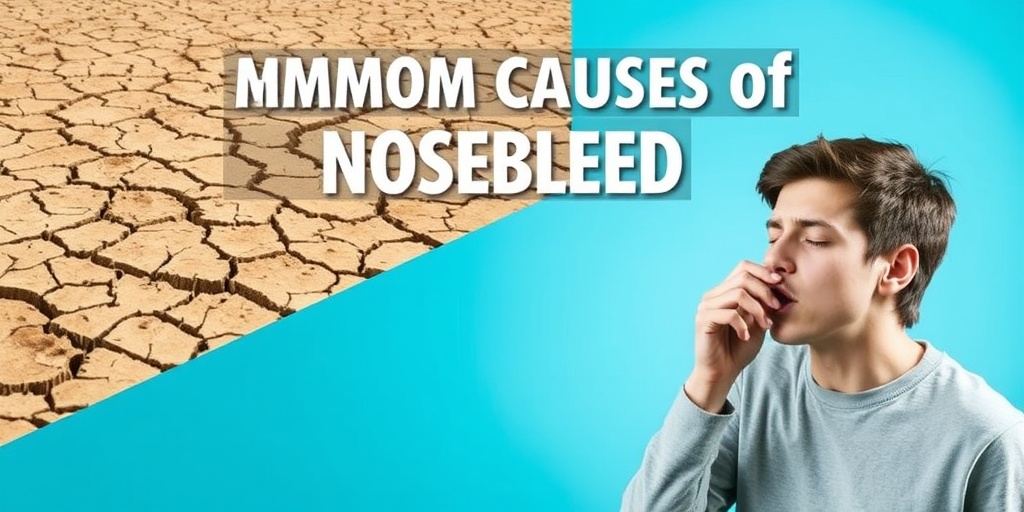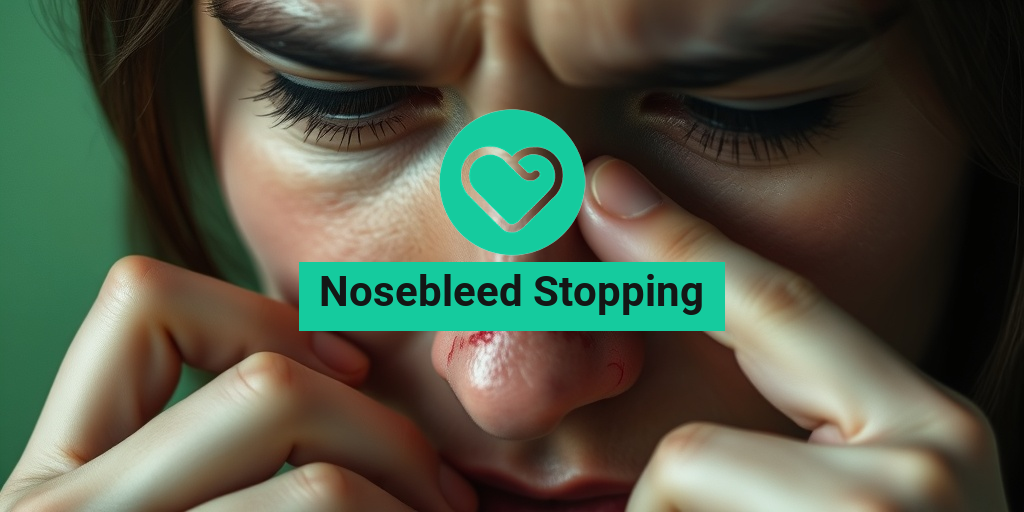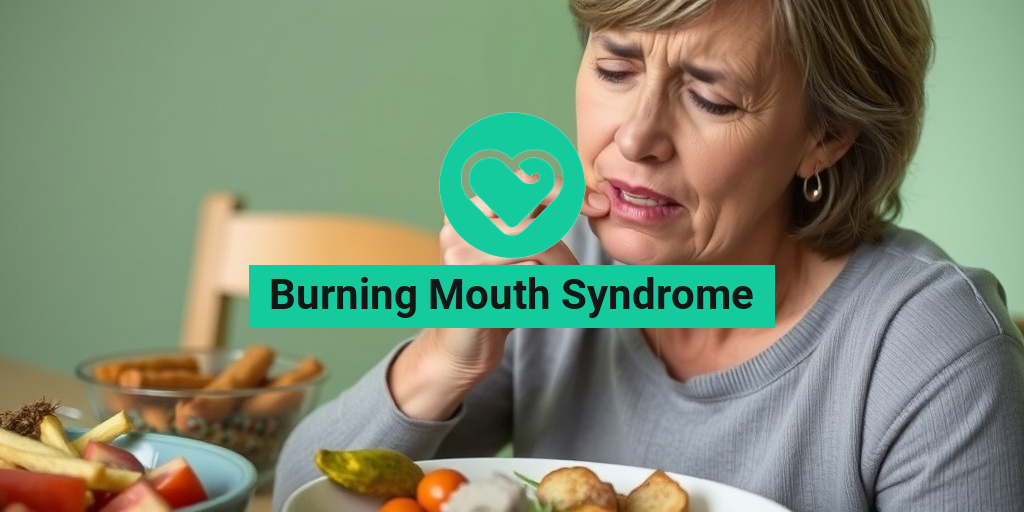What Is a Nosebleed?
A nosebleed, medically known as epistaxis, is a common condition that occurs when the blood vessels in the nasal cavity rupture, leading to bleeding from the nostrils. While they can be alarming, most nosebleeds are not serious and can be managed effectively at home. Understanding the nature of nosebleeds is essential for effective nosebleed stopping techniques.
Nosebleeds can occur in one or both nostrils and may vary in severity. They can be classified into two main types:
- Anterior Nosebleeds: These are the most common type, occurring in the front part of the nose. They are usually caused by minor trauma or irritation.
- Posterior Nosebleeds: These are less common but can be more serious. They occur deeper in the nasal cavity and may require medical attention.
While nosebleeds can happen to anyone, they are particularly prevalent in children and older adults. Understanding what a nosebleed is and how it occurs can help you respond effectively when one happens.
Common Causes of Nosebleeds
Nosebleeds can be triggered by a variety of factors. Here are some of the most common causes:
1. Dry Air
One of the leading causes of nosebleeds is dry air, especially during winter months or in arid climates. The lack of moisture can dry out the nasal membranes, making them more susceptible to bleeding.
2. Nose Picking
Children, in particular, may pick their noses, which can damage the delicate blood vessels inside the nostrils. This is a common cause of stopping nosebleed in kids.
3. Allergies and Infections
Allergic reactions and upper respiratory infections can lead to inflammation and irritation of the nasal passages, increasing the likelihood of nosebleeds. If you notice frequent nosebleeds during allergy season, consider consulting a healthcare professional.
4. Trauma
Any injury to the nose, whether from sports, accidents, or even vigorous blowing, can result in a nosebleed. It’s essential to treat any trauma carefully to prevent further bleeding.
5. Medications
Certain medications, particularly blood thinners and nasal sprays, can increase the risk of nosebleeds. If you are on medication and experience frequent nosebleeds, discuss this with your doctor.
6. Structural Abnormalities
In some cases, structural issues within the nose, such as a deviated septum, can lead to recurrent nosebleeds. If you suspect this might be the case, a consultation with an ENT specialist may be beneficial.
7. Environmental Factors
Exposure to irritants such as smoke, strong odors, or chemicals can also contribute to nosebleeds. Reducing exposure to these irritants can help minimize the occurrence of nosebleeds.
Understanding the common causes of nosebleeds is crucial for effective nosebleed stopping. By identifying triggers, you can take proactive measures to prevent them. For instance, using a humidifier in dry environments or avoiding nose picking can significantly reduce the frequency of nosebleeds.
If you find yourself dealing with frequent nosebleeds, consider exploring products designed for nosebleed stopping, such as specialized sprays or kits. These can provide immediate relief and help manage the situation effectively.
For more detailed information and evidence-based health answers, visit Yesil Health AI. They offer valuable resources that can help you understand and manage various health conditions, including nosebleeds.
In conclusion, while nosebleeds can be concerning, they are often manageable with the right knowledge and tools. By understanding what causes them and how to stop them, you can feel more confident in handling this common health issue. 🌟

Symptoms of a Nosebleed
Nosebleeds, also known as epistaxis, can be alarming, but they are often harmless. Understanding the symptoms can help you respond appropriately. Here are some common signs that indicate a nosebleed:
Common Symptoms
- Blood Flow: The most obvious symptom is the presence of blood, which may flow from one or both nostrils.
- Feeling of Warmth: You might feel a warm sensation in your nose or throat as blood flows.
- Swallowing Blood: If blood drips down the back of your throat, you may experience the urge to swallow.
- Lightheadedness: In some cases, especially with heavy bleeding, you may feel dizzy or faint.
Types of Nosebleeds
Nosebleeds can be classified into two main types:
- Anterior Nosebleeds: These are the most common and occur in the front part of the nose. They usually result from minor injuries or dry air.
- Posterior Nosebleeds: Less common but more serious, these occur deeper in the nasal cavity and can lead to more significant blood loss.
Recognizing these symptoms can help you determine the severity of the situation and whether you need to seek medical attention. If you notice frequent nosebleeds or if they are accompanied by other concerning symptoms, it’s essential to consult a healthcare professional. 🩺
How to Stop a Nosebleed
Knowing how to effectively stop a nosebleed can make a significant difference in managing the situation. Here are some tried-and-true methods to help you or your child stop a nosebleed quickly and safely.
Immediate Steps to Take
- Stay Calm: Anxiety can increase blood pressure, which may worsen the bleeding. Take a deep breath and stay calm.
- Positioning: Sit up straight and lean slightly forward. This position helps prevent blood from flowing down the throat, which can cause nausea.
- Pinch the Nose: Using your thumb and index finger, pinch the soft part of your nose shut. Maintain this pressure for about 5 to 10 minutes without checking if the bleeding has stopped.
Additional Techniques
If the bleeding continues, consider these additional methods:
- Cold Compress: Applying a cold compress or ice pack to the bridge of the nose can constrict blood vessels and help stop the bleeding. 🧊
- Nasal Sprays: Over-the-counter nosebleed stopping sprays can be effective. These products often contain ingredients that promote clotting.
- Humidifiers: If dry air is a frequent cause of nosebleeds, using a humidifier can help keep the nasal passages moist.
When to Seek Medical Help
While most nosebleeds can be managed at home, there are situations where medical attention is necessary:
- If the nosebleed lasts longer than 20 minutes despite applying pressure.
- If the bleeding is heavy or accompanied by other symptoms like dizziness or weakness.
- If nosebleeds occur frequently, which may indicate an underlying health issue.
In summary, knowing how to stop a nosebleed effectively can alleviate stress and prevent complications. Whether you’re dealing with a nosebleed in a child or an adult, these steps can help you manage the situation with confidence. Remember, staying calm and following the right techniques is key! 🌟

Home Remedies for Nosebleeds
Nosebleeds, while often alarming, are usually not serious and can be managed effectively at home. Here are some home remedies for nosebleeds that can help you stop the bleeding quickly and comfortably.
1. Stay Calm and Sit Up
When a nosebleed occurs, the first step is to remain calm. Anxiety can increase blood pressure, which may prolong the bleeding. Sit up straight and lean slightly forward to prevent blood from flowing down the back of your throat, which can cause nausea.
2. Pinch Your Nose
One of the most effective methods for stopping a nosebleed is to pinch your nostrils together. Follow these steps:
- Use your thumb and index finger to pinch the soft part of your nose.
- Maintain pressure for about 5 to 10 minutes without releasing.
- Breathe through your mouth during this time.
This technique helps to compress the blood vessels and can significantly reduce bleeding.
3. Apply a Cold Compress
Using a cold compress can also be beneficial. Applying ice wrapped in a cloth or a cold pack to the bridge of your nose can constrict blood vessels and help stop the bleeding. Just be sure to limit the application to 10-15 minutes to avoid skin damage. 🧊
4. Use a Humidifier
Dry air can contribute to nosebleeds, especially in winter months. Using a humidifier in your home can help keep the nasal passages moist, reducing the likelihood of bleeding. This is particularly useful for children, as they are more prone to nosebleeds.
5. Nasal Saline Spray
Another effective remedy is to use a nasal saline spray. This can help keep the nasal membranes hydrated and prevent dryness. You can find over-the-counter saline sprays or make your own by mixing salt and water. Just a few sprays a day can make a significant difference!
6. Avoid Picking Your Nose
While it may be tempting, picking your nose can irritate the nasal lining and lead to more frequent nosebleeds. Encourage children to avoid this habit as well. Instead, teach them to gently blow their nose if they feel congestion.
7. Stay Hydrated
Drinking plenty of water is essential for overall health and can help keep your nasal passages moist. Aim for at least 8 glasses of water a day, and consider incorporating foods with high water content, like fruits and vegetables, into your diet. 🍉🥒
When to Seek Medical Help
While most nosebleeds can be managed at home, there are certain situations where you should seek medical attention. Knowing when to consult a healthcare professional is crucial for your well-being.
1. Frequent Nosebleeds
If you or your child experiences frequent nosebleeds (more than once a week), it may indicate an underlying health issue. Conditions such as blood clotting disorders or high blood pressure can contribute to recurrent nosebleeds. A healthcare provider can help diagnose and treat these conditions.
2. Prolonged Bleeding
If a nosebleed lasts longer than 20 minutes despite applying pressure, it’s time to seek medical help. Prolonged bleeding can be a sign of a more serious issue that requires professional intervention.
3. Heavy Bleeding
Heavy bleeding that soaks through a tissue or requires constant pressure to control is a cause for concern. If you notice this, don’t hesitate to contact a healthcare provider or visit the emergency room.
4. Signs of Infection
If you experience symptoms such as fever, facial swelling, or a foul-smelling discharge along with nosebleeds, it could indicate an infection. Conditions like sinusitis can lead to nosebleeds and should be evaluated by a doctor.
5. Nosebleeds After Injury
If a nosebleed occurs after a head injury, it’s essential to seek medical attention immediately. This could indicate a more serious injury, such as a fracture or concussion.
In summary, while most nosebleeds can be managed with simple home remedies, it’s important to know when to seek medical help. By being informed and prepared, you can effectively handle nosebleeds and ensure your health remains a priority. 🌟

Preventing Future Nosebleeds
Nosebleeds can be a nuisance, but the good news is that many can be prevented with simple lifestyle changes and precautions. Understanding the causes of nosebleeds is the first step in preventing them from occurring in the future.
Stay Hydrated
One of the most effective ways to prevent nosebleeds is to keep your nasal passages moist. Dry air, especially during winter months or in arid climates, can lead to dryness and irritation. Here are some tips to stay hydrated:
- Drink plenty of water: Aim for at least 8 glasses a day to keep your body and nasal passages hydrated.
- Use a humidifier: Adding moisture to the air can help prevent dryness in your home.
- Saline nasal sprays: These can be used to keep your nasal passages moist, especially in dry environments.
Avoid Nose Picking
Nose picking is a common habit that can lead to nosebleeds. The delicate blood vessels in the nasal lining can easily be damaged. To prevent this:
- Keep fingernails trimmed: This reduces the risk of injury when touching your nose.
- Use tissues: If you feel the urge to pick, use a tissue instead to minimize damage.
Manage Allergies and Sinus Issues
Allergies and sinus infections can lead to inflammation and increased susceptibility to nosebleeds. Here’s how to manage these conditions:
- Consult with a healthcare provider: They can recommend appropriate medications or treatments.
- Keep allergens at bay: Regular cleaning and using air purifiers can help reduce exposure to allergens.
Protect Your Nose
If you engage in activities that could lead to nasal injury, consider protective measures:
- Wear protective gear: If playing sports, use helmets or face guards to protect your nose.
- Be cautious during physical activities: Avoid activities that could lead to falls or injuries to the face.
Nosebleed Myths and Facts
There are many misconceptions surrounding nosebleeds that can lead to unnecessary panic or improper treatment. Let’s debunk some common myths and provide the facts.
Myth 1: Nosebleeds Only Happen in Dry Weather
Fact: While dry air can contribute to nosebleeds, they can occur in any season. Factors such as allergies, sinus infections, and even high blood pressure can also lead to nosebleeds.
Myth 2: You Should Tilt Your Head Back
Fact: Tilting your head back can cause blood to flow down your throat, which may lead to choking or swallowing blood. Instead, lean forward slightly to allow the blood to drain out of your nose.
Myth 3: Nosebleeds Are Always Serious
Fact: Most nosebleeds are not serious and can be treated at home. However, if you experience frequent nosebleeds or if they last longer than 20 minutes, it’s important to seek medical attention.
Myth 4: Only Children Get Nosebleeds
Fact: Nosebleeds can affect individuals of all ages. While children may experience them more frequently due to their habits, adults can also suffer from nosebleeds due to various factors.
Myth 5: You Can Stop a Nosebleed with Ice
Fact: While applying ice to the nose can help reduce swelling, it is not a primary method for stopping a nosebleed. Instead, apply pressure to the nostrils and lean forward.
Understanding these myths and facts can empower you to handle nosebleeds more effectively and reduce anxiety surrounding them. Remember, knowledge is key when it comes to nosebleed stopping techniques! 🩹

Frequently Asked Questions about Nosebleed Stopping
What are the best methods for nosebleed stopping?
There are several effective methods for nosebleed stopping. Some of the most recommended techniques include:
- Pinching the nostrils together and leaning forward.
- Applying a cold compress or ice pack to the nose.
- Using a saline nasal spray to keep the nasal passages moist.
- Utilizing a nosebleed stopping product or kit specifically designed for this purpose.
How long does it typically take for a nosebleed to stop?
The duration of a nosebleed can vary, but most will stop within 10 to 15 minutes with proper care. If a nosebleed lasts longer than 30 minutes, it is advisable to seek medical attention.
Can I use ice to help with stopping nosebleeds?
Yes, applying ice can be beneficial. Placing an ice pack on the back of the neck or on the nose can constrict blood vessels and help in stopping nosebleeds more quickly. ❄️
What should I do if my child has a nosebleed?
For stopping nosebleeds in children, follow these steps:
- Have them sit up straight and lean slightly forward.
- Pinch the nostrils together for about 10 minutes.
- Encourage them to breathe through their mouth.
- If the bleeding continues, consult a healthcare professional.
Are there any products specifically designed for nosebleed stopping?
Yes, there are various nosebleed stopping products available, including sprays and kits that contain materials to help clot the blood and promote healing. These can be particularly useful for frequent sufferers.
What is a nosebleed stopping device?
A nosebleed stopping device is a tool designed to apply pressure to the nasal passages or deliver medication to help control bleeding. These devices can be especially helpful for individuals who experience recurrent nosebleeds.
Can I prevent nosebleeds from occurring?
To help prevent nosebleeds, consider the following tips:
- Keep the nasal passages moist with saline sprays.
- Avoid picking the nose or blowing it too hard.
- Stay hydrated and use a humidifier in dry environments.
When should I seek medical help for a nosebleed?
If a nosebleed lasts longer than 30 minutes, occurs after an injury, or is accompanied by other concerning symptoms, it is important to seek medical attention. 🚑




